Long-range aviation in Afghanistan
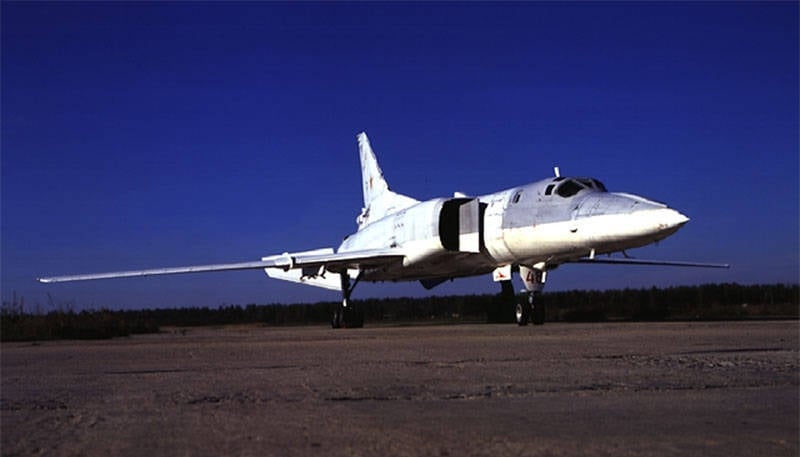
Assuming extreme scenarios, up to and including open confrontation with the "vanguard of imperialism" and "reactionary Arab regimes", the command took appropriate steps to secure the operation. Although the initial directive of the General Staff from 24 in December 1979 was required only to “put in full combat readiness ... the aircraft of TurkVO and SAVO for a possible increase in the group of Soviet troops in Afghanistan,” readiness touched almost all Air Force and Air Defense units, including Long-Range Aviation. In contrast to the usual anxieties conducted under the scenario of a nuclear conflict, this time the "rangers" were tasked with ensuring the advancement of troops, using their strike capabilities if necessary and crushing resistance with conventional ammunition. Thus, in Engels, even Emki Myasishchev's 1096 and 1230 TBAPs were preparing for bomb strikes, removing fuel “barrels” from refuelers and refitting them under suspension on cassette holders using 52 FAB-250 or 28 FAB-500. At the Khanabad airfield, a Tu-16 was transferred from Orsha closer to the border, and to Semipalatinsk - from Priluk. They took everything they needed, including large-caliber bombs. They received a combat mission on the spot - to strike at the northwestern outskirts of Herat, and due to ambiguity of the situation (the first reports of "satisfying the Afghan side's request for military assistance" appeared only on December 29) the flight was required to be made under cover of darkness. The reason for such an order was the fear of meeting in this city a serious resistance, because in March 1979 there was a major uprising, supported by the local garrison and leading to the death of thousands of people. The information about the deployment and forces of the enemy obtained by the "long-range players" did not differ with certainty: "There are a dozen of them or a whole division, whether they are sitting in a house or holding a rally in the town square - nobody knew anything about that," commander YA Reshetnikov recalled. As a result, the raid did not take place. Enter troops passed almost without interference.
Despite the escalation of hostilities, in the first years of the war the 40-I Army managed by the forces of the army and front-line aviation. The exception was the request for assistance from the Long-Range Aviation, when it was necessary to strike at the azureite mines in the northern district of Jarm, which belonged to the possessions of Ahmad Shah. Frank neglect of the central government and the self-will of the owner of these places were based, in addition to his personal abilities and military forces of the rebels, also on the ancestral fisheries of these places - the extraction of precious stones. Tangible revenues from their export strengthened the power of Massoud and allowed him to pursue his own policy, well supplying his troops in the tradition of the combination of war and trade adopted in the East. The region, where, at the best of times, did not recognize the central government, did not give rest to Kabul, every now and then attempting to “touch” the deposits. The next operation to “undermine the dushman economy” was planned for the summer of 1981 - in the tradition of planned economy, the directives of the USSR Ministry of Defense at the beginning of the year demanded “to release at least 70% of the country’s territory and 80% of county and volost centers from the rebels”. During the preparation, intelligence found a field airfield from the village of Sarnsang, from which stones were taken to Pakistan. The Mi-8 of the Soviet border guards from Gulhany was sent to the area, however, the mines were well guarded, and the helicopters stumbled upon an unusually dense anti-aircraft fire. Not reaching the goal, they turned back, bringing an impressive set of holes. The next step was the preparation of a raid by an entire helicopter squadron from Faizabad, but the work of the 40 Army's Air Force Headquarters prohibited the work, finding it too risky.
They decided to destroy the mines by bombing, but a considerable distance was separated from the airfields of the 40 Army and the border bases of TurkVO. It was not easy to search for the MiG-21 and Su-17 pilots, which had a rather modest aiming and navigation equipment, lost from the glaciers and mountain ranges (a year earlier, the Chirchik MiG-21 group on the route was so “blown off” by the jet currents that they avoided 100 km and sat in Bagram literally in the last liters of fuel). The strike was assigned to Long-Range Aviation, and 10 June, according to Jarma, completed a heavy bomber squadron. Bombing was carried out from the heights of 10-12 thousand meters, not so much from the fear of fire from the ground, as for safety of flying over the mountains, reaching here the heights of 5-6,5 thousand meters (the goal itself lay at the foot of the 6729 mark, the highest peak of the Afghan Hindu Kush) . It was not possible to establish the effectiveness of the strike, but it is known that, before that, the extraction of lapis lazuli was carried out in an explosive way ...
The DA again appeared over Afghanistan during the large-scale Panjsher operation 1984. A truce was in place with Masood during the previous two years, under which the 40 Army I was even obliged to provide him with "aviation and artillery support in the event of armed clashes between his units and rival formations." Especially stipulated the promise "not to inflict air strikes on the Panjshir." Personal work with Ahmad Shah was conducted by a GRU lieutenant colonel sent to him, “introducing him to the Soviet way of life and the works of the classics of Marxism”. However, the world was unsteady: the increasing influence of the “Panjshir lion” caused jealousy not only of Kabul, but also of the numerous advisory apparatus, which justified its role with the war. In order to get rid of this “thorn”, one of the high-ranking KGB officers, who was not accustomed to exchanging small things, proposed radical measures: “To plan a complex of military-tactical measures (operation) for the Ahmad Shah grouping, including using weapons special power ". The latter implied not only the participation in the leadership of the operation of the Minister of Defense S.L.Sokolov, but also the unprecedented large-scale involvement of aviation.
In addition to the 40-A Air Force, four FA regiments from border airfields were involved in the raids, and the use of long-range ammunition was required to use ammunition of the largest caliber. At the beginning of April, a squadron of the Bobruisk 200 Guards of the TBAP on the Tu-16, capable of delivering 9 tons of bombs to the target, including three, five and nine tonnes, was relocated in Khanabad in Khanabad. At the base of Mary-2, six Tu-22М2 from 1225 TBAP flew from Belaya Trans-Baikal airfield, under the command of deputy. regiment commander p / p V. Galanin. The volumes of the work to be done were obvious: the depots could not accommodate all the ammunition delivered, and everywhere - at the sites, bombs of various types and calibers piled up between the runways and the “taxiing”. All these reserves were to be dumped at Punjsher, where the number of Masud units was 1984 surveyed by April at 3500 fighters. In other words, for every 12-15, the enemy’s man had one Soviet aircraft or helicopter.
In April 4.00 19 bombers went on target. The first went up Tu-16, then - Tu-22М2, after half an hour 60 Su-24 left after them. The concentration of aircraft in the sky over the Panjshir was such that the “sides” approaching the strike site were recommended to include RSBN only from the near line, otherwise the station in Bagram, which had a carrying capacity of 100 machines, “choked” (there is no greater density at metropolitan airports). So that the pilots could better navigate over unfamiliar terrain, they installed ahead of time "beacons" for on-board radars - trusses with corner reflectors of the type that stood on landfills. "Dalnik" went on targets above the rest, dropping bombs from 9000-10000 m through dense clouds. Particularly impressive were the blows of the “twos”: each of the cars carried 64 OFAB-250-270, which fell out of the series from level flight, after which dozens of hectares below boiled up with a solid carpet of gaps. To preserve the alignment, the locks of the bomb rack were opened in a specific order: in pairs, left and right, front and back.
Massive strikes continued for the first three days of the operation, but the “carcass” from Khanabad and Mary performed only one sortie in the morning - after it the targets were delayed by dusty veil, and the long-range aviation combat work was required for secrecy to be conducted at dusk. This limited the participation of YES in the operation. Already in May, her cars left the border airfields.
The effectiveness of high-altitude bombing was low. One of the reasons for this was the inappropriate nature of the ammunition used. The heavy mines that shook the ground did not achieve the result: the few barriers identified by the reconnaissance in the way of the troops did not linger in one place, leaving the strikes in time. The bombs of the 3000, 5000 and 9000 kg calibers did not at all correspond to the tasks of fighting manpower and even the destruction of buildings - when they were created, they were not intended to be used on ground targets! At the end of the 1940s, the FAB was the only means of fighting large ships and has remained in service since then, although the characteristics of their striking effects on other objects were not even evaluated (the "lorries" were considered acceptable for strikes on industrial facilities, dams). and underground facilities). Even with the bombardment of “enemy villages”, which completely swept away houses and duvalis, the real effect was small. The power of impressive-looking bombs was wasted: the lethal radius of the FAB-3000 shock wave did not exceed 39 m and even for FAB-9000 remained within 57 m. Disabling contusions with bleeding from the nose and ears received the enemy, respectively, in 158 and XUMUM. m around - the result, inferior series of bombs "front caliber", aiming dropped from the attack aircraft. Despite all this, for several sorties, infrequent in the practice of "long-range", the commanders of both groups received the Order of the Red Banner.
The Afghan campaign is usually compared with the Vietnam War. It begs a parallel in the evaluation of the work of long-range aviation. History repeated: starting with the use of attack and fighter units, the US Air Force was drawn into an endless chain of escalating strikes, and a year later they were involved in strategic aviation, trying to solve all the problems with a tonnage of bombs. Nevertheless, with all the apparent similarity, fundamental differences should be taken into account. OXV was five times smaller than the American forces in Vietnam, the fighting was of a much smaller scale, and, accordingly, the 40 Army's air force even with the involved units was an order of magnitude inferior to the many thousands of US aviation armada. North of the 16 parallel, the United States still dealt with the state, including enterprises, warehouses, transportation hubs with bridges, stations and ports - the usual large targets for bombardment. Even in the South, where general carpet bombing was practiced, the goal was a network of roads, along which they were replenished and weapons.
These recipes did not fit the fight against a scattered and small adversary, as was the case in the purely anti-guerrilla Afghan war. Accordingly, the participation of Long-Range Aviation in it remained sporadic. All the necessary adversary carried with him, without the need for infrastructure support provided by military science - fortifications, warehouses, headquarters and barracks, routinely sought by intelligence. Even the fortresses and caves preserved from ancient times, which could serve as a haven for the Mujahideen and looked like a “reliable target”, were immediately left to the usual fighters, who were dissolved in the mountains and “Zelenka”. When the greatest damage was caused by ambushes on the roads and in the villages, the power of the bombers could not be used.
The situation was embarrassing: the enemy continued to gain strength, expanding the sphere of influence, but was not suitable for an overly powerful aircraft that literally did not notice the enemy. This fully related to the results of the “Big Panjsher” 1984. Although the then commander of the 40 Army, Gen. -l-L.E.Generals, called him “an example of the largest and most productive operation,” real progress was more than modest. . Panjsher had to be left, and the detachments that had escaped large losses and Masud himself returned to him. The conclusion of GlavPUR reads: “Experience has confirmed the low effectiveness of conducting large-scale military operations from a military point of view, and sometimes their political damage.” As for the bomb strikes, the infantry expressed even more definite, reproaching the aviators that they were "eating their own chocolate for nothing."
Yet in the summer of 1986, Long-Range Aviation was again involved in work on Afghanistan: the mere presence of such a powerful force required its use. In those months, the widely declared withdrawal of the part of the OXW was being prepared, during which the 6 regiments were to leave the country (however, the army was replenished at the same time), and long-range bombers were supposed to prevent the movement of dushmans and shelling of the departing columns. In addition, a number of operations were planned in the south that needed air support. By this time, in addition to the usual fighting to “clean up” the provinces and return them to the power of Kabul — an occupation as regular as hopeless — attacks on bases and base areas on which the “regiments” and “fronts” began to come into use , united under the leadership of large field commanders of the former scattered gangs. There were different bases that served as a support for one formation, transshipment bases and points from which weapons were shipped and caravans were shipped, and large base areas that included headquarters, warehouses, weapon and ammunition workshops, communications centers and training centers. Places for them were the remote gorges, lost in the mountains.
Describing qualitative changes, an analytical note from the Office of Combat Training of the Ground Forces in October 1984 drew attention to the appearance of objects that “the rebels are preparing for a stubborn defense in engineering”. Aviation became the most reliable means of defeating them. However, the “pin shots” of the 40 A's Air Force, forced to act at a considerable distance from the bases, did not give due success: at such a distance, fighters and Bagram attack aircraft could, at best, deliver a couple of bombs, and due to difficulties with the supply, time, the headquarters was even forced to impose restrictions, obliging to hang one bomb at a time! (However, by that time all combat cargo was usually dropped in the first run, and the result of the strike depended more on its accuracy than on the number of bombs.) the same high-explosive power the marginal for them "five hundred" was not enough for the destruction of shelters, often cut down in solid rock or filled with concrete. It is curious that some caves did not succeed in undermining even the sappers — the injected charges could not bring down the vaults, and the explosions only “cleaned” them as if under a broomstick. Protected targets required adequate measures of impact, and here those very large-bomber bombs turned out to be suitable. The high-impact blow from above caused shaking, cracking and collapsing of the stone which was filling the caves, and the landslides covered their entrances. Bombing on the slopes gave an impressive effect: hundreds of tons of stones collapsed buried the mouths of caves and approaches to them, the cornices fell to the bottom of the gorges, a few roads and trails rested against the pile of rocks, and the enemy had to spend weeks searching for workarounds. So that the power of the explosion was not wasted on the surface, the fuses were set to trigger with a slowdown, which allowed the bomb to go deeper and explode in the thick of the mountain. The AVU-E and AV-139E electric fuses, specifically designed for large-caliber bombs and high-altitude bombing, were commonly used. They were distinguished by increased security - the final cocking occurred only through 18-23 from after separation from the aircraft. Particularly beneficial was the use of special thick-walled FAB-1500-2600. Despite the “one-and-a-half” caliber, they had a real mass of more than 2,5 t, and the solid cast “head” of ten-centimeter thickness (against the 18-mm walls of the usual FAB-1500), allowed to go deep into the rock. Thus, the 469 kg of its contents gave a greater effect than the 675 kg of explosives "lorry" of the types M-46 and M-54 (besides, the TNT-5 troylhexogen that started the "teescu" had a one-and-a-half equivalent compared to the trotyl in the other large caliber bombs) . Three-ton bombs of the M-46 and M-54 models contained 1400 and 1387 kg of TNT, a five-ton FAB-5000-54 - 2207,6 kg, and a nine-ton FAB-9000М-54 - 4297 kg. The ammunition of the 1950 model by the middle of the 80's has already been removed from service, as well as the BraB-3000 and -6000 armored monsters that could be useful here.
In the raids took part Tu-16 251-th Guards. Red Banner TBAP, relocated to Mary from Belaya Tserkov. In those summer months, such a DA's dignity was clearly manifested as independence from “seasonal” problems, due to which the combat load of the FA aircraft depended not so much on the task as on the season. The heat sometimes didn’t even let the car off the ground “overloaded” with a pair of bombs - a fresh (June) confirmation of this was the “decomposed” Su-17 on take-off at Bagram. And the Tu-16 with its bomb-loaded bombs and half-filling without any problems could cover the whole territory of Afghanistan. Anti-aircraft fire for the bombers from the heights of the "long-range" did not pose a threat, but fears were inspired by the appearance of the latest F-16 in Pakistan, which had already managed to "check in" with the attack in May of two Afghan planes.
Therefore, the Tu-16 sorties covered the MiG-21bis 115 of the Guards IAP from Kokait, with which the incident was the only incident associated with the entire “check-in”. The stern shooter of one of the “carcasses,” Ensign N.Slipchuk, known in the regiment as a romantic and poet, suddenly took the fighters who were catching up with them as enemy and, without hesitation, opened fire. The firing lasted half a minute, which was enough to land all the ammunition in 1000 shells in one long line. Fighters shied away from the tracks, but the preparation of the shooter, fortunately, left much to be desired, and all the damage was reduced to replacing the “shot” cannon barrels (the normal turn for overheating and wear should not exceed 200-300 cartridges).
The most ambitious was the use of long-range aviation "under the curtain" in the last months of the war. 1988 was asked for help by the "rangers" in October, with the beginning of the final stage of the withdrawal of troops, when they were expected to intensify the actions of the enemy: Finally, many opposition leaders threatened with particularly painful blows, not only in the usual manner of beating in the back, but also gaining points on the eve of future power struggle. Other leaders saw in the withdrawal of the Soviet troops the opportunity to “deal” with Kabul without hindrance, and at the same time to resolve contradictions between themselves, and they willingly signed “non-aggression pacts” with 40 A. But the echo of change was getting out of use the word "rebels", which confirmed the well-known: "A revolt cannot end in luck - otherwise his name is different." Peace agreements with the Mujahideen, in which the leadership of OKSV had a certain experience, made it possible to easily withdraw troops, but “from above” the way home saw differently. Nevertheless, the position of General BV Gromov’s headquarters and the leadership of the operational group of the USSR Ministry of Defense, headed by General of the Army V. I. Varennikov, had a tangible impact on the organization of the withdrawal and the work of the involved aviation forces.
By the autumn of 1988, a unit of the 40 Army's Air Force (up to 45%) had already left the DRA. To compensate, along with other forces, by the end of October, a separate group of Long-Range Aviation was formed, seconded to the Air Force SAVO (TurkVO was liquidated by that time, but the headquarters of the united district and the Air Force command post were located in Tashkent). The main task of the group was to cover the withdrawal of parts and places of deployment by preemptive attacks on the areas of deployment of opposition weapons, as well as disrupting attacks on large cities, attacking bases and warehouses, supporting Afghan forces in blocked garrisons, designed to “eliminate political distortions in abandoned areas of the country” .
The group included airplanes and crews of the Guards units of the YES: squadron Tu-16 251-GGT TBAP from the White Church two squadrons Tu-22М3 from Poltava 185-GV TBAP. They were placed on two nearby airfields Mary-1 and Mary-2 - the only free to that. of time, even if farther from, the target than the border bases (for the “far-away” the difference in 200-300 km was not significant). In Mary-1 where it was. The 1521-I airbase of the MiG-23 and MiG-29 fighters, "playing up" for the enemy during the training of the AI pilots, deployed the 11 Tu-16 - three squads and two control group vehicles. On the other side of the runway, the local airport was located, which was another reason for the division of the Long-Range Aviation group: Mary-1 was used to receive "transport workers" with the withdrawn troops, UN representatives were invited there, and the menacing-looking Backfires did not fit well with the ideas of Western diplomats implementation of the Geneva Agreements. Tu-16, methodically taxiing to the start from day to day, attracted less attention by doing “planned combat training”.
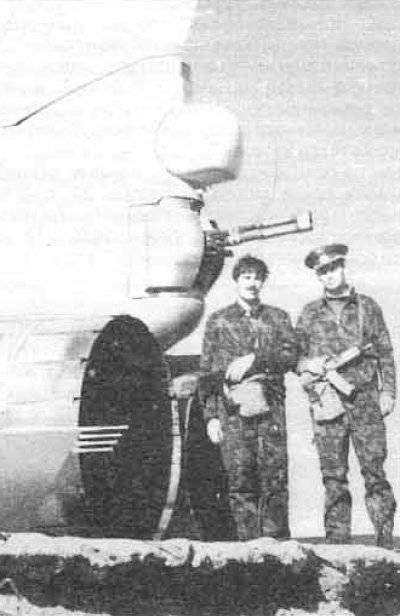 The “carcasses” from Belaya Tserkov were of considerable age - almost all of them began service in the early sixties and were the same age as their pilots. Unlike 40 A, who were sent to the Air Force and tried to select classes of at least 1-2 classes, the “long-range” work method allowed attracting almost the entire flight crew, bypassing any special training. The same was true of machines that had not undergone any modifications: in order to "take and throw," the capabilities of the veteran of the Long-Range Aviation were quite enough. By 1988, the Tu-16 remained the only aircraft capable of carrying the FAB-9000, and this dignity was finally claimed. It was not without problems: at home no one had to deal with monster bombs, for which the entire structure was mounted in the cargo compartment - the bridge holder of the DB-6 with massive beams and struts. The transportation of the “nine-tones” required a personal, transport - BT-6 trolley, which could be shifted from the efforts of several dozen people. The cumbersome equipment with unaccustomed use of one of the first attempts to hang up the bomb led to the fact that the FAB-9000, which had gone awry, was stuck in the compartment and almost whacked down. The gunners rushed all over the place and only from the second time managed to set the recalcitrant bomb in place. The Nines were the main cargo, but from time to time smaller caliber bombs were used, up to the “placer” of the FAB-250, which was taken over the 24. Such differences in the load were explained not so much by tactical necessity as by interruptions in the supply, which “cleaned up” the warehouses throughout the country.
The “carcasses” from Belaya Tserkov were of considerable age - almost all of them began service in the early sixties and were the same age as their pilots. Unlike 40 A, who were sent to the Air Force and tried to select classes of at least 1-2 classes, the “long-range” work method allowed attracting almost the entire flight crew, bypassing any special training. The same was true of machines that had not undergone any modifications: in order to "take and throw," the capabilities of the veteran of the Long-Range Aviation were quite enough. By 1988, the Tu-16 remained the only aircraft capable of carrying the FAB-9000, and this dignity was finally claimed. It was not without problems: at home no one had to deal with monster bombs, for which the entire structure was mounted in the cargo compartment - the bridge holder of the DB-6 with massive beams and struts. The transportation of the “nine-tones” required a personal, transport - BT-6 trolley, which could be shifted from the efforts of several dozen people. The cumbersome equipment with unaccustomed use of one of the first attempts to hang up the bomb led to the fact that the FAB-9000, which had gone awry, was stuck in the compartment and almost whacked down. The gunners rushed all over the place and only from the second time managed to set the recalcitrant bomb in place. The Nines were the main cargo, but from time to time smaller caliber bombs were used, up to the “placer” of the FAB-250, which was taken over the 24. Such differences in the load were explained not so much by tactical necessity as by interruptions in the supply, which “cleaned up” the warehouses throughout the country.Many targets lay in the environs of Kandahar and Jalalabad, already abandoned by the Soviet troops. The bombardments here were in the nature of a counterweight to continuous shelling and attacks, especially since there was no reason to hope for the active actions of the government garrisons. This also affected the character of the work of the “long-distance players”, who for the most part could not imagine the objects of strikes, distinguishing them only geographically. Upon returning to questions about what goals were bombed, they got off with the words: "Those that indicated."
Departures to the "furthest corners" took 3,5-4 hours. Due to the fact that they had to work at the Pakistan border itself, they didn’t have to rely on their own weapons and passive defense equipment (Tu-16 did not have IR traps required in the Afghan sky, having only “seeders” of dipole ribbons for radar interference) Departure was accompanied by a fighter cover, and because of the duration of the raids, the escort was interchangeable. The neighbors MiG-29 saw off and met the group, sometimes the duty link Su-17МЗ from Mary-2 was involved for this. Confirming their fighter assignment in part, the Su-17 carried a pair of P-60 missiles and PTB-800 tanks, which allowed bombers to escort over the DRA north. Closer to the goal, the MiG-23LD from the 120-IAP in Bagram took the baton.
On bombardment, one detachment of three Tu-16 was constantly heading. Departures were usually assigned in the morning, with the goal being achieved without the use of the RBP-4 radio probe, "blind-sighted" and useless over the mountains, where there were no clear radar landmarks (the instrument of thirty years of age was able to detect objects with 150-180 km, but only if they stood out well against the background of the terrain, and were suitable, as they said, “to notice the skyscrapers and the Statue of Liberty”). The route was managed by a navigator using ARC-5 and DISS “Track”, and the flight mode was almost constant: the height of 10-11 thousand m and the speed of 850 km / h. With the release of the target bombing led navigator, using the optical sight OPB-11Р.
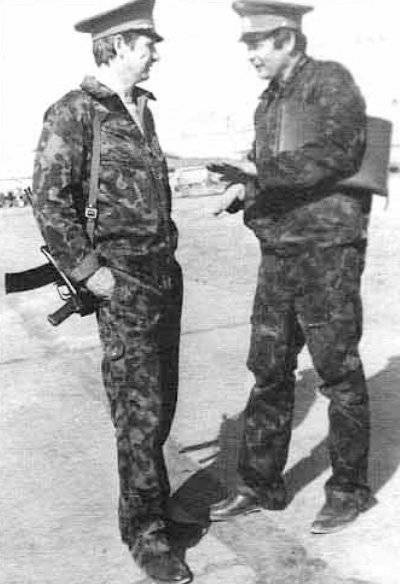 Sometimes the Tu-16 was attracted to night strikes, while the terrain was highlighted by the SAB with the Su-17. Once the helicopters were sent to monitor the results of the strike, but they did not find any trace of the target - a powerful collapse had buried not only the object itself, but also the entire former relief. Another time, to “clean up” the area of the bombing in the green zone, paratroopers took off. Upon their return, they reported: “You have fought off the hunt for war there.” Not without a miss - the inevitable satellites of high-altitude bombing, in which dispersion of the order of 300-500 m was considered normal: the breaks of the “nine-tones” went too close to the checkpoint near Kabul and led to contusions of the soldiers on duty there, some of whom had lost hearing. In just three months of operation, the Tu-16 dropped the 289 bombs FAB-9000-54. The pilots themselves “cover” and the flight altitude, which made it possible not to be afraid of fire from the ground, inspired confidence and made departures a routine matter. The work was facilitated by organizing it on a “rotational basis”: some crews flew home to rest from time to time, and others replaced them, so participation in the war for them was limited to 15-20 combat missions. The “very not new” cars themselves brought the hassle on which petty failures and breakdowns constantly happened, because of which the planes were attracted on flights as they were in good condition. To the credit of the old, but strong TU-16, even with failures in the air, it was possible to accomplish the task, and the crews tried to eliminate the malfunctions right in flight (the dignity of the “old” and not very complicated equipment). The cabin of the “carcass” made it possible to get to many units and equipment shelves, in all the corners all kinds of small pieces, fasteners, clamps, locking, etc., were piling up, and the crew members shoved a screwdriver and pliers into their pockets.
Sometimes the Tu-16 was attracted to night strikes, while the terrain was highlighted by the SAB with the Su-17. Once the helicopters were sent to monitor the results of the strike, but they did not find any trace of the target - a powerful collapse had buried not only the object itself, but also the entire former relief. Another time, to “clean up” the area of the bombing in the green zone, paratroopers took off. Upon their return, they reported: “You have fought off the hunt for war there.” Not without a miss - the inevitable satellites of high-altitude bombing, in which dispersion of the order of 300-500 m was considered normal: the breaks of the “nine-tones” went too close to the checkpoint near Kabul and led to contusions of the soldiers on duty there, some of whom had lost hearing. In just three months of operation, the Tu-16 dropped the 289 bombs FAB-9000-54. The pilots themselves “cover” and the flight altitude, which made it possible not to be afraid of fire from the ground, inspired confidence and made departures a routine matter. The work was facilitated by organizing it on a “rotational basis”: some crews flew home to rest from time to time, and others replaced them, so participation in the war for them was limited to 15-20 combat missions. The “very not new” cars themselves brought the hassle on which petty failures and breakdowns constantly happened, because of which the planes were attracted on flights as they were in good condition. To the credit of the old, but strong TU-16, even with failures in the air, it was possible to accomplish the task, and the crews tried to eliminate the malfunctions right in flight (the dignity of the “old” and not very complicated equipment). The cabin of the “carcass” made it possible to get to many units and equipment shelves, in all the corners all kinds of small pieces, fasteners, clamps, locking, etc., were piling up, and the crew members shoved a screwdriver and pliers into their pockets.Even a serious incident that occurred in January 1989 with Tu-16 to-on E. Pomorov did not prevent reaching the goal. On the plane carrying FAB-9000, at the height of 10100, the nasal blister blew off. In the cockpit of the bomber, walking at a speed of 850 km / h, broke a furious whirlwind. Inside, the temperature dropped to the outboard - 50 ° C, and a vacuum was struck in the ears. Worst of all was the navigator, Mr. Lylov, who was right under the icy stream. It only remained to thank the fur flight jackets and headsets with retro glasses, which were kept in the gear of the Tu-16 crews. In case of depressurization, the instruction ordered an immediate descent, but only 15 minutes remained to the target, and the commander continued to hold the aircraft at flight level and course. The crew bombed, though not particularly aimingly (under the wind that was raging in the cockpit, it was not up to this) and safely reached home. For this departure, Mr. Pomors received the Order of the Red Star, and the rest of the crew - the medal "For Military Merit".
The Tu-22MZ Poltava Regiment settled in Mary-2, where the 156-th APIB was based on Su-17МЗ, at that time received a respite from the almost uninterrupted work in the Afghan campaign. Attraction of Poltava for the combat debut of new bombers was justified by the fact that the 185-th Guards TBAP was the leader in the development of the machine and had the greatest experience of its operation, including flights to long ranges with practical bombing. The emergence of "threes" meant a qualitatively new level of the "Afghan" air force grouping. The new machines had a perfect navigation complex NK-45 and aiming and navigation equipment, which provided accurate access to targets and bombing, high-quality radio communications equipment and an impressive range of combat loads. Although the Tu-22М3 cargo compartments were not designed for bombs larger than three-ton ones, the total weight of the cargo could reach 24 tons. More moderate options were chosen for work from Mary that did not exceed 12 tons, for reasons of maintaining volatility.
On October 28, two squadrons of 2 aircraft flew from Marta-8 from Poltava along with the regiment commander, commander Mr V.I. Nikitin, his deputies Parshin and Androsov and navigator A.Libenkov. The squadrons led the commander 1 p / p R.N. Saberov and the comquesque 2p / p-kI.P. Degterev. Takkkpolk had "three" the very first series (the flip side of the leader operation), inferior to newer machines, and among them were airplanes that were not yet equipped with IR traps; two Tu-22MZs of the last series were borrowed from the 402 TBAP from Orsha. With the help of IL-76 and An-12, technical personnel, necessary equipment and replaceable pilots were transferred to Mary (the 21 crew were involved in the work).
Already on October 31 the first flight took place. As in the next two, the targets were located near Kandahar - in the mountain range in the north and "Zelenka" in the south along the Dori River, where there were detachments that blocked the roads to the city. On November 3, bombs lay in the vicinity of the Kandahar air base, from where shelling was fired. The next day, the goal was the town of Jalez, which lay in a favorable place for the souls - the gorge with access directly to Kabul. From the nearest mountains a panorama of the capital was opened, and the route to the south passed nearby.
For the next week, bombing took place in the northeastern sector around Kabul, where the launchers were concentrated, which bombarded the city with rockets. A rare day went without shelling — Kabul remained the center of the aspirations of the troops of the most diverse affiliation, not only for tactical reasons, but more as a means to declare oneself. Shelling the capital, firing at least a few shells in its direction, was a matter of prestige. The disturbing fire did not bring much harm at first, but gradually gained momentum: if 1987 rockets fell in 147 in the city, killing 14 residents, then in 1988 the number of missiles increased to 635 and the victims to 233. Even non-objective launches sooner or later found targets: 26 June 1988. Hitting one missile at the Kabul airport turned the Su-25 parking area into a fire, leaving only debris from the 8 attack aircraft. On November 14, the Tu-154 had to fly up with the Soviet government commission to the accompaniment of gaps, the same shelling struck the residential module of the 50 aviators of the OSAP, burying the 11 people in it.
For the answer attracted the "rangers", after half an hour took off on anxiety. After the evening bombardment, strikes on the Dushman ring around Kabul continued for the next two weeks, falling predominantly on the surrounding mountain plateaus and ridges, from which start-ups were noted from roadblocks, as well as on reconnoitered warehouses and missile storages. The hunt for missile troops was not very successful: the launchers often stood on the cars and immediately changed positions, even more often used primitive disposable guides with a clockwork mechanism. As a result of all the work of the 185 regiment, the 40 Army's reconnaissance department carried all 6 machines, 4 PU and 340 rockets to his account.
At the end of November, two sorties were performed on targets at Faizabad that stood out against the general background - lazurite and emeralds were again bombarded in Masud's possessions (by the way, these goals were the only ones that with a stretch can be attributed to the long-range combat regulations of long-range aviation as “operational and strategic reserves ": he simply did not provide for all the others). The surroundings of Kabul were also day-to-day handled by local aviation. Once, the flights of YES and Bagram attack aircraft coincided in time and place, and already on the combat course in the sight of one of the bombers, the Su-25 circling below suddenly showed up. He had time to drive away on the radio, because the close explosions of powerful bombs could hurt the “rook”, if not a shock wave, then fragments, flying to a two-kilometer height and “steamed” in the air for almost a minute.
After several bombardments using FAB-500, they were abandoned, moving to a larger caliber, which made it possible to more fully utilize the capabilities of the machines (another reason was the troublesome equipment and suspension of hundreds of such bombs on each shift). The standard variants were two FAB-3000 or eight FAB-1500, while the group headed for one target tried to load in the same type, so that the difference in suspension did not impede the flight in the ranks. Part of the bombs were equipped with special fuses of the AVPZ for mining with self-liquidation during 6 days. One-and-a-half and three-ton "mines" were laid in areas where the enemy was active, and they didn’t discharge them (there were cases when the spooks themselves used unexploded bombs as land mines) did not allow the trap to react to an attempt to turn the fuse or to pull the bomb. Unwanted external multi-lock MBDS-U9-68 were immediately removed from the airplanes, although the rocket pylons continued to remain under the wings for another month (it was difficult to dismantle them, and they simply didn’t get around for everyday work).
The regiment command and control group, participating in combat missions, was able to establish effective work. From the evening after the call from Tashkent, the cards were dismantled, and the crews were already in readiness for receiving the combat order. The planes were waiting for them fully equipped, immediately after the previous departure, receiving "on duty" charging bombs and refueling in 40 t of kerosene, which allowed them to work on any goals. Building an order of battle and approaching the target worked out “on foot in flight,” painting them with chalk on asphalt. In flight, they used 10-km scale maps, and above the place of impact they were guided by more detailed “two-kilometer” and “half-kilometer”, ahead of time having carefully studied each pot on the tablet. Departures were carried out by the eight Tu-22МЗ. Squadron assigned and goals, sometimes divided into fours and pairs. Usually they were grouped and were in 500-1000 and one from the other. Sometimes two squadrons sent the attack at once. The planes leaving for the mission were taxiing all at once, lining up before the start and starting the run-up immediately after the lead. This achieved a quick take-off, after which the group gathered in a closed formation and at the turn around the airdrome and marched to the target a column of pairs with 150-th excess of the slave, 10-second interval between pairs and 40-second between the links.
The route kept the speed of 900 km / h, for the first time at an altitude of 7200-7800 m. After warning about the danger of MANPADS launches from mountain peaks, the echelons were raised to 9000-9600 m, making a way around high peaks. The danger was not exaggerated: a defeat of Su-17М3Р MANPADS, which went at a height of 7000 m, was noted earlier, and the XAD agent in the gang confirmed the launch from the summit. Immediately after the start of work, the “long-range players” themselves observed the launch. P / p-ku R. Saberov, he was remembered as "a dusty cloud on the slope, a trickle of disturbed air upward and an outbreak of a rocket, which was sent for self-destruction."
Departures began every day according to the plan, at 10 in the morning, however, the crews began to notice now and then rising columns of smoke along the way, apparently warning the enemy. Time began to change, but the majority of departures remained daily. The flight to remove the 800-1000 km took place without any particular problems: the NK-45 navigation system with the digital car DVM-10TS-45 provided access to the target with an accuracy of the order of hundreds of meters, and the onboard control automation was able to navigate the plane and land. . The navigator's work was simplified by the continuous position indication on the mobile map of the PA-3 tablet. With access to the designated square, the entire crew connected to help the navigator-operator, looking for the target. For the attack, the group crumbled, and each aimed individually with the help of the TV-sight OPB-15T, which provided a high-resolution picture. Control of the aircraft at the same time passed to the navigator, and the discharge followed automatically. The accuracy of the bombing was impressive: it happened that the navigators placed bombs on a dispute in a separate building or duval. More often, however, the indicated square was covered with gaps. The pilots were not inclined to particularly understand the type of goal - they received tasks and performed work, and dusty rupture mushrooms swelled equally among duval lines, on roads, and among deserted dunes. The pilots got to the questions of the Moscow correspondent, who looked into the sensations during the bombardment, got off with the words: “If something goes wrong, it’s not our business, as they say, the Motherland told me,” or even frankly sent him away.
The bombs were regularly dropped, even if not a single village was visible for many kilometers around in these areas, only mountains and desert were sailing in the sights. It is doubtful that such expenditure of ammunition was due to exploration misses - there were no targets on the photoplates either. One of the motivations of such strikes was their precautionary character for the surrounding population: the earth and crumbling rocks leaving from under their feet clearly showed that they were expecting particularly uneasy ones. According to gaining rumors, the headquarters of 40 A, obeying orders dictated by big politics “from above” not to stop the bombardment, thus still deflected attacks from the “treaty” villages and groupings. Most likely, this concerned Masuda, who faithfully observed the terms of the truce. Already after the war, Lieutenant General Gromov said, at first glance, surprising words: “Even during periods of tough confrontation ... we did not seek to break his gangs, but to physically destroy Ahmad Shah himself.” However, everything is logical: after the defeat of the "Panjshir lion" detachments, they would be replaced by the formation of the "irreconcilable".
The war nevertheless continued, and the necessary tactical measures were taken: approaching the target for surprise was built slightly to the side, then, in 4-5 minutes from the point of discharge, they abruptly turned, getting rid of the load in one go. Without lingering over the point of impact, the line closed at the exit and at the same time increased speed, keeping the course for Termez. They usually went back to the afterburner, accelerating to M = 1,7, and many noted with satisfaction that “only in war there was plenty of supersonic noise” (at home it was not always possible to break the sound barrier at a height not lower than 11000 m). The fighter cover that accompanied the group on all sorties did not keep pace with the Tu-22МЗ. The MiG-23 carriers and missiles had speed limits and could not keep up with the "long-range", because of which you could hear the "cover-ups" on the air: "Big, don't drive the horses, I'm behind!"
The jammers of the Tu-22PD went in battle formations, complementing the work of their own on-board “triples” defense complexes. Three Tu-XNUMPDs from 22-th TBAP under the command of V. Melnik, assigned to the Long-Range Aviation group, were based together with the Poltava people. Their task was to disrupt possible launches of Pakistani missiles of the Krotal air defense missile system and, especially, the F-341 attacks. When working at the border, this danger had to be taken into account, since after a reset it was necessary to carry out photo monitoring of the results onboard AFA-16 / 42 and 20 / 42, for which the plane had to be held for at least a minute on a straight line, and the excess 100-15 km more than once led to most "ribbon". Tension in the cockpit was added by the sensitive SPO-20 "Birch", with an alarming squeak that kept reacting to everything, whether it was the work of the PNA of neighboring planes, the radiation of the scopes "sights" or the powerful noise of the "noise makers".
The use of infrared traps by "rangers" was different from the accepted method of FA, where the pilots with the exit from the attack immediately turned off the shooting. Tu-22MZ at a distance from the target began to pour kilogram traps LO-43 (each carried on 48 cartridges), and the closing opened the firing of the feed guns with special projectiles PRLS sdipolnoy "noodles" and emit heat PIKS. Shells, however, were soon abandoned, saving time on packing tapes and troublesome replacement of cartridge boxes, which had to be erected to a five-meter height. Pakistani fighters already had few chances to attack the speeding troika, and the train of blazing balls and tracks served as a barrier from the launches in pursuit.
“For every fireman” the pilots were given AKS-74U flight, grenades and a pair of pistols, and instead of soldering and a useless rescue boat, flashes of water and shops were loaded into weapons (as they joked, “for the complete set they lacked only robe and skullcap "). Even on the way to the aerodrome, the pilots each time accompanied the machine gunner to protect against possible sabotage. The precautionary measure was not superfluous: in the nearby Karshi, a Tajik soldier was detained at the airfield, twisting bombs from bombs to help combat the co-religionists.
At the end, several sorties were carried out at night, once I had to bomb through dense cloud cover covering the target. At the same time, in addition to the NK-45 and PNA inertial gyroplatforms, the automatic long-range navigation system A-713 was used, which determined the position by ground radio beacons (it was often used to check navigational calculations even when flying under normal conditions). The system gave high accuracy, “to the span”, but bombing with its help required good coordination in the crew, where the commander had to perform dovoroty on the commands of the navigator, taking into account all the adjustments and corrections, and the operator to control. There were few failures, although the “troika” was considered to be a rather capricious machine, mainly in terms of complex electrical equipment and electronics. One day, due to a drop in oil pressure, I had to turn off the engine on Mr. P. Androsov's plane and return for the rest. Another time, the plane, which had landed in a dusty storm (the famous "Afghan"), began to be blown away, and the pilot "attached" the car to the lane with a double overload.
“Extreme” sorties, arriving at 3,4 and 5 of December, were carried out by Poltava under Kandahar: the airfields of the 40 Army's Air Force were closed due to the weather, and the Afghan garrison requested urgent assistance. According to the results of the trip, the commander of 185 of the Guards of the TBAP, V.Nikitin, who had completed a dozen combat missions, received the Order of the Combat Red Banner, and the same awards were given to A.Libenkov and both komescas R.Saberov and I.Degterev. The crew commanders and pilots were awarded the Order of the Red Star, and the navigators were given “For Military Merit”.
In the 5 raid of December, the "long-range" workers from Orsha who replaced Poltava took part, and on December 7, the crews and machines of the 402 TBAP, which were commanded by the prefecture of Yanin, laid down the entire amount of combat work. The group from Orsha consisted of the same two squadrons of 8 Tu-22МЗ and one more reserve aircraft to maintain a squad of forces in case of failures and breakdowns. In its composition there were also two bombers, lent to the Poltava citizens, who were to complete a second term (on one of them 35 combat sorties were completed - the largest number among all the triples).
402-th TBAP continued the same work, the “geography” of the targets has also changed a little. However, the winter weather has led to more frequent use of "blind" methods of bombing. The most reliable was the bombardment using a navigation system, which, using data from a radar operating in review mode, issued the Thunder command at the right time — a signal to reset. Gradually, flights were increasingly performed at night, causing disturbing strikes. At the same time, the situation did not allow the use of the PNA radar associated with NK-45 for bombing: the mountains covered with snow looked “smooth”, and among the targets there were no large buildings, bridges or equipment clusters. Sometimes dumping was carried out using a radar marker, if there was a characteristic contrasting object nearby (they usually served as a bend of the river or dam of Surubi and Darunta to the east of Kabul), for which the course angle and range were refined. We tried to bomb several times near Kabul according to the commands of the gunners, who had “balalaikas” - goniometric-long-range automatic beacons. This technique did not give much success due to the low accuracy of the strike. And the tactic of the Long-Range Aviation itself, which assumed the discharge of cargo in one go, was not suitable for targeting land, when the gunner and the pilots understand each other perfectly and correct the blows.
Almost all the sorties bombed FAB-3000, making an exception only once and putting it on a mining site in the mountains. The increased consumption of heavy bombs even forced them to order from the industry additionally.
During night departures, observing the blackout, the BANOs were turned off, leaving only the dim front-line lights visible from above and illuminating the cabin with a “little mouse” -the red light on the starboard. If there were blunders, then there were no complaints from remote areas. Only one of the sorties ended in a scandal when, during the bombing of Kandahar in December, one of the dropped bombs fell near the headquarters of the Afghan 2 Army Corps, and the other exploded right in the residential quarter, killing several dozen people. Governor-General of the province N.Olumi arrived with a complaint, and a joint commission of General V.Afanasyev and Afghan Kadyr arrived in Mary. It was not possible to write off the incident on the dushmansky bombardment: fragments of heavy bombs, which only “long-range” worked there, were picked up at the scene of the explosions (although in the case there were “two-ton caliber bombs” that do not exist in service). In the end, the story was hushed up, not becoming a search for the guilty, partly because the use of Long-Range Aviation was not advertised and issued for the bombing of Afghan aviation.
In isolated cases, in addition to coordinates and squares, the nature of the target was specifically mentioned. On Saturday, January 7, Su-25 was shot down over the Jananez gorge near Kabul, and the pilot died with him (this was the last loss of attack aircraft in the Afghan war). In response, heavy bombs covered the entire area around the site of the fall. A month later, on February 8, two Afghan crews, taking with them their families, flew off on their Mi-8 to Panjshir. The hunt for the hijacked helicopters, which landed after the production of fuel in one of the gorges, lasted three days. The Tu-22МЗ was also attracted to it, without much success looking for helicopters through the “windows” in the clouds, but finally Su-25 managed to bomb them.
In one of the sorties, right under the formation of the Tu-22MZ, there was a scheduled Boeing going somewhere east. According to S. Novikov, the navigator of senior liter, “we thought about all of their air corridors a little, observing only echelons in height so as not to collide. Boeing was on its own course, crawled right under his nose at the dogon and slowly emerged on the screen of OPB-15T when the shutters of the cargo compartment were already open. It seems it was a Hindu - all decorated, the lights are lit, colorful, like on a Christmas tree. Maybe he deliberately wanted to take a closer look at the military, but because of him he had to linger over the dump - there were mountains all the way down, not one by one, so a friend. ”
However, the “sparing regime” of the bombardment of deserted plains and mountains did not last long. In the central regions, the remaining parts of the 40 Army were again concentrated near the possessions of Massoud, which, according to the report of General Varennikov, nevertheless "categorically forbade its formations to conduct military operations against the Soviet troops, which they strictly observed." However, the top leadership of the USSR openly accused the military of unwillingness to defeat the enemy, followed by a strict order to prepare a new strike on the Panjshir. However, a compromise was decided on the spot, and in mid-December, not the positions of Masud and the villages in the valley, but the remote Quran-o-Munjan region with lazurite mines were bombed. But by the New Year the raids stopped, and the hint from the air remained half.
OXV was facing the last house walk, and this road led through Charikar and Salang, controlled by the “Panjsher Army”. On January 6, the raids resumed, and the Soviet government group flew 10 numbers to Afghanistan, after which it received an order to carry out Operation Typhoon, which was the last chord of the war. Special merit in this belonged to Kabul, according to the advisers, "who showed unrelenting perseverance" in his efforts to inflict damage on the enemy by the forces of the departing army. Playing politics, Najibullah convinced Moscow of Masoud’s intentions to "hand over the northern provinces of the country to the 14 Americans" (there were a total of 12).
The three-day operation was supposed to begin on January 24, but at the last moment it was ordered not to pull, and the attacks began a day earlier, and the political workers were tasked with “exposing the criminal stance taken by Ahmad Shah.” The bombings took place on Panjshir even in previous days, but during the operation they became non-stop. The withdrawal of troops was halted so that artillery and bombers could work without hindrance in roadside areas. Got and kishlak, and in those days, bombers were not limited to one flight per shift. However, the enemy once again left the bombing. There was no return fire, in fact, and during the Typhoon the losses were limited to three dead soldiers. It was impossible to evaluate the successes presented in the reports from the air, but the troops that continued their way to the pass saw off hundreds of bodies of dead civilians brought to the road.
Long-range aviation continued to work at the same pace, although the pilots were not counted on combat missions, it was only later that personal records appeared about “participation in military operations in the DRA from the territory of the USSR”. At the same time, the aircrew regularly accrued “bonus” - 11 rubles, determined with accounting accuracy. 78 cop “For the combat day” for which the work fell, regardless of the number of sorties. Together with a traveling "treshka", so much was accumulating a tangible amount, which amounted to almost one more pay in a month. She was well deserved: flight work is already categorized as heavy, and especially in cramped bomber cabins. The KT-1 armchairs did not differ in convenience, the workplaces did not straighten out, and the flights that took more than two hours exhausted people. Frosty winter added - somehow adapted local housing was not really heated, and people even slept in winter outfit, and even in shoes.
The population of the military town also had a hard time - when taxiing to the start, the bombers turned their tails in his direction and began the three-minute gassing of the engines prescribed by the regulations. The twenty-five ton NK-25 heaved clouds of sand and dust mixed with a kerosene child that covered the village. The work of heavy aircrafts affected the state of the taxiing and the strip that was not very suitable for them (the width of the runway in Mary-2 was much more familiar - 44 instead of 100). The orderly worn concrete floor could not withstand the loads, and for several months it was literally rolled out by wheels and gas jets of the hundred-ton “Backfires”, covered with cracks and hollows. One of them was hit by the nose-landing gear of Yanin’s plane, the support was damaged, and that day was the only one when the flight had to be canceled.
With the advent of wet weather, frequent problems with on-board electronics. Due to failures and failures in the engines due to the fault of the control system, they had to turn them off twice in the air on An-Ayeva’s Ty-22M3 (the defect was not a single machine operation). On Mr. Sokolov's plane, when returning because of the non-release of the main rack, I had to resort to the emergency system.
Work 402 th TBAP, like the first shift, flew to monitor Deinekin with the chief navigator of the Long-Range Aviation Egorov. The commander himself, although he continued to fly and had access to Ty-22M3, did not participate in combat missions. However, the division commander D.M. Dudayev, who took the division a year ago, flew from Tartu in December and flew several times with his subordinates to the bombardment, being among those awarded with the Red Banner and soon received the rank of major general. The division of the promising general in the results of combat training was then recognized as the best in the DA.
By the beginning of February, the replacement of the crews from Orsha, which had completed the 2 of the month, arrived. The eight Ty-2M22 3-th TBAP from Novgorod Solts arrived in Mary-840. Selecting trained pilots, one crew from the 52 training TBAP from Shaykovka was sent to replace them under the command of Mr. Primak’s guard. From the beginning of February, flights were carried out unaccompanied by a Tu-22PD, since most of the targets were located in central regions, far from the border. Another reason was the visibility of noise interference, heard even by ordinary radio receivers and outright silencing the transmission of the Kabul telecentre. She served as a warning about the approaching bombers, and they preferred to "enter without knocking."
The last combat departure of the crews of a separate group of long-range aviation came on the very eve of a complete withdrawal of troops. 14 February, when the border was left to cross only General Gromov with his escort, "long-distance" bombed the northern regions. The attacks on the opposition that were scheduled for the next day in case of the assault on Kabul did not take place. Despite the persuasion of the Afghan authorities, who insisted on the continuation of the bombing as compensation for the departure of 40 A, they did not agree. Nevertheless, a real armada remained at the border, ready to take a “step back”. In addition to the local and seconded aviation forces, the entire withdrawn grouping of the 40 Army's air force was detained at the airfields, and only after three weeks was the readiness removed. “Dalniki” left Mary after the rest - the Long-Aerial group with the most “long arms” gave “good” to the 13 March 1989 only to fly home.
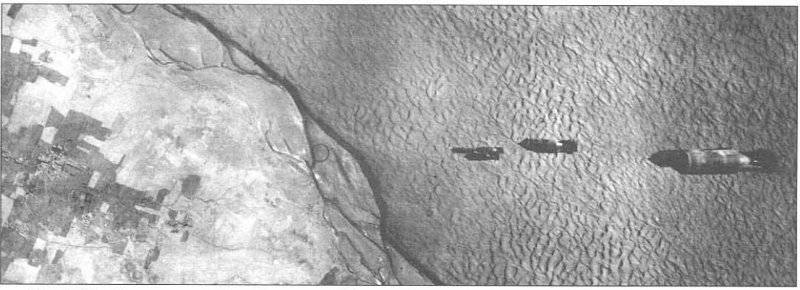
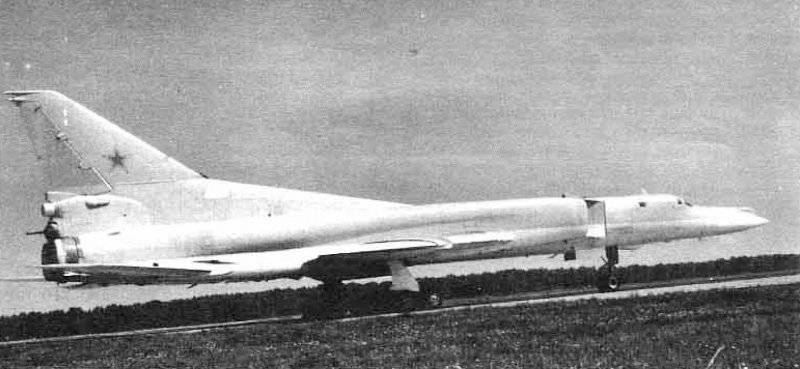
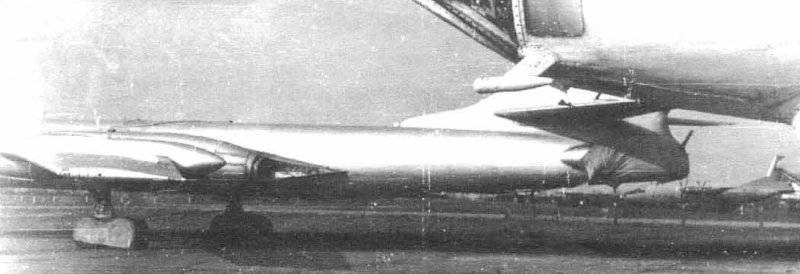
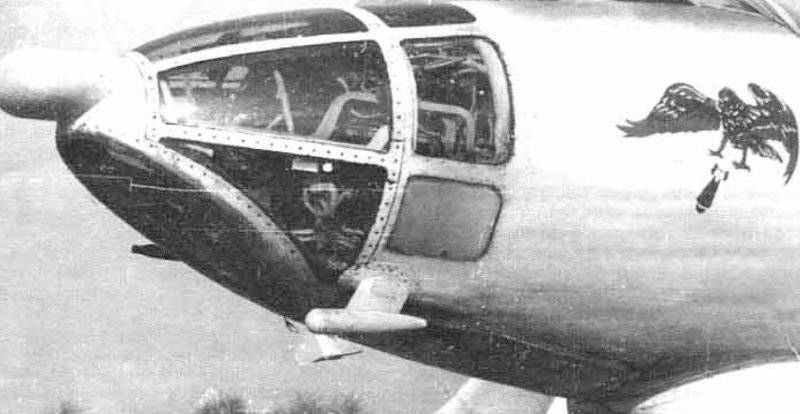
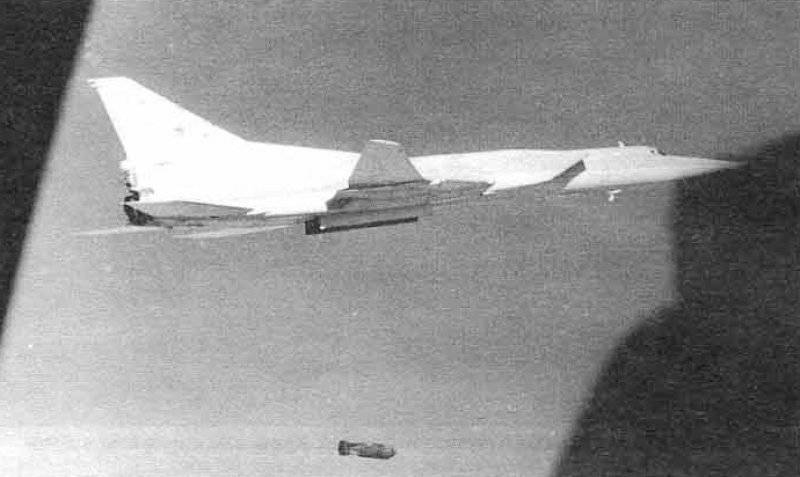
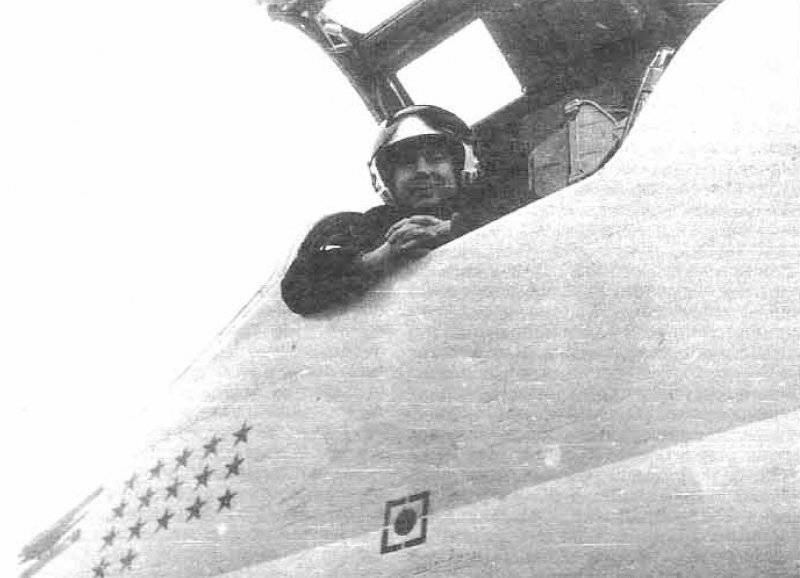
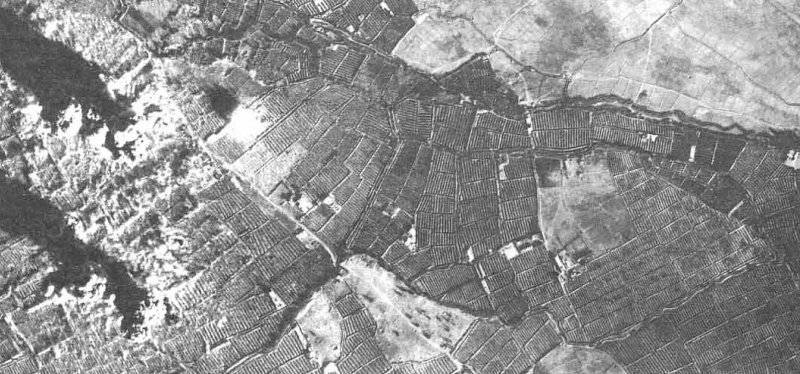
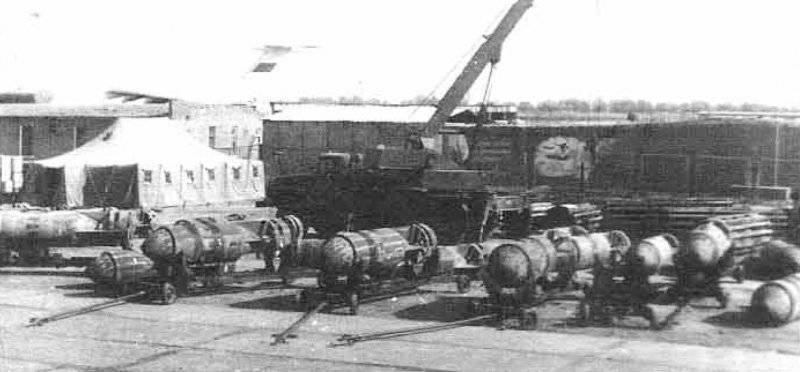
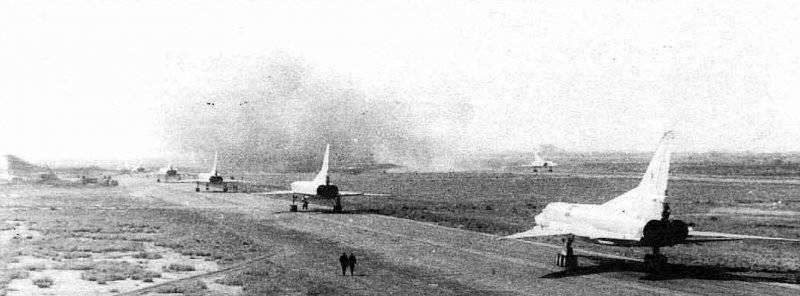
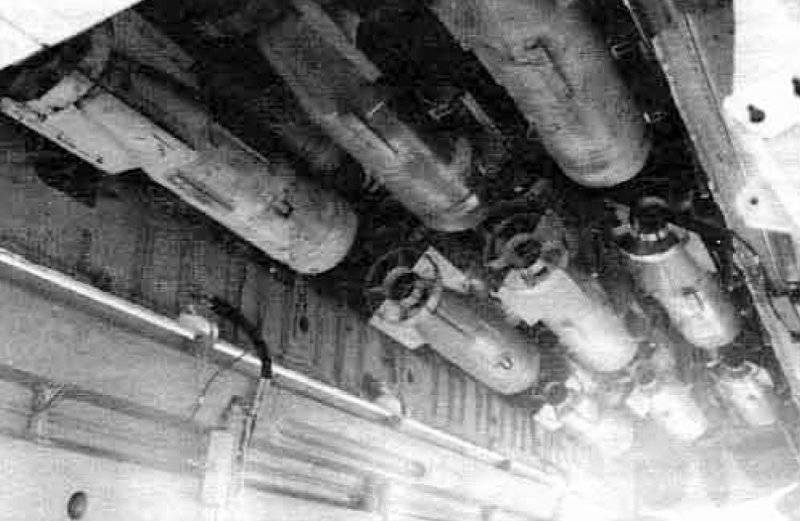
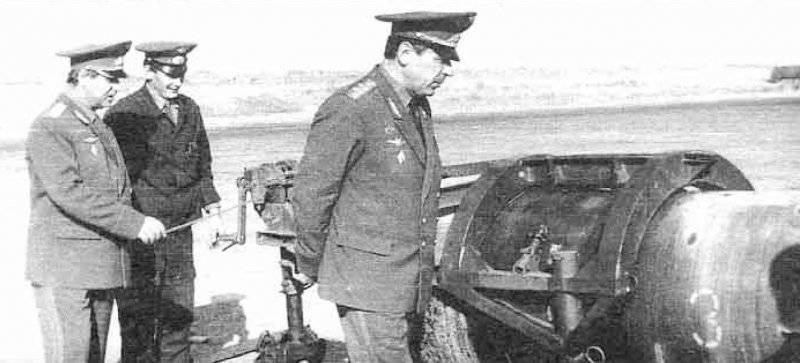
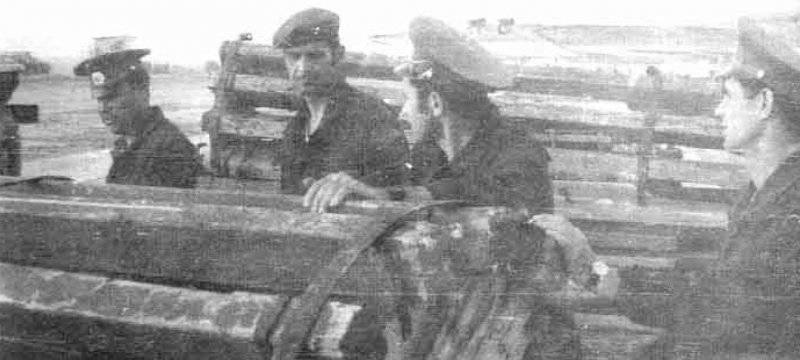
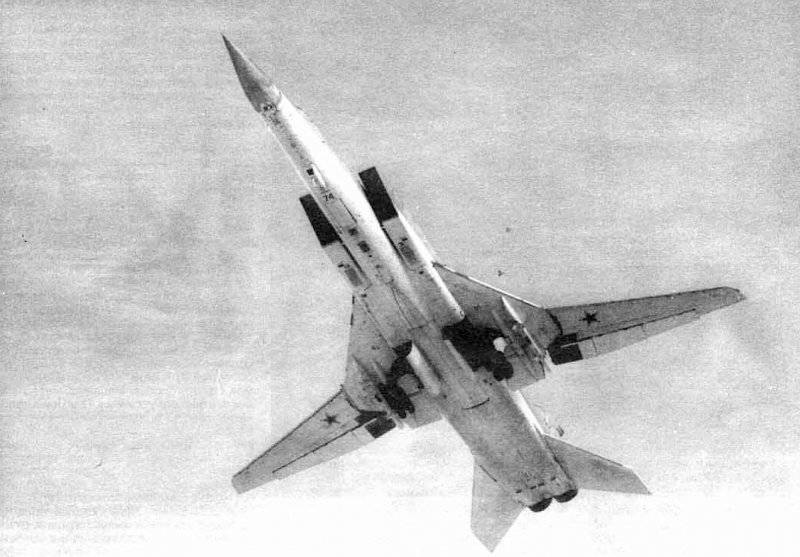
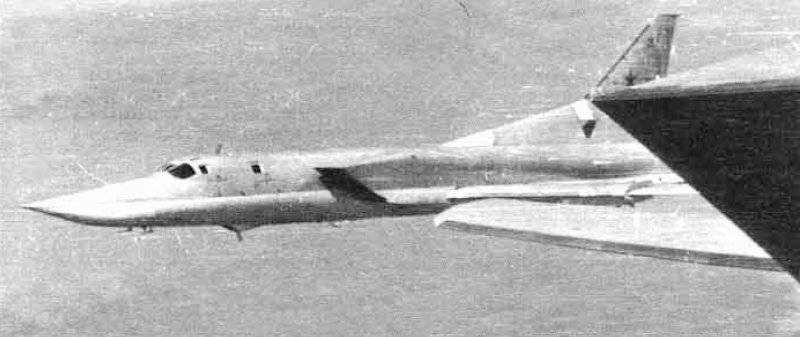
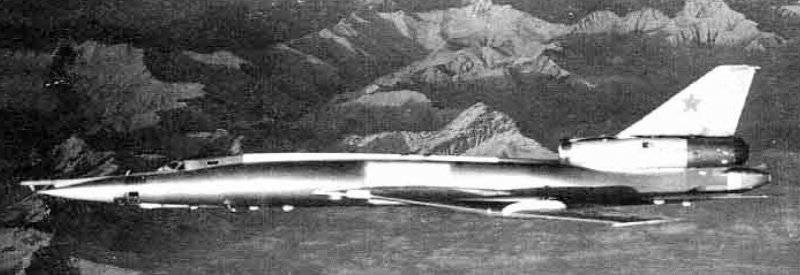

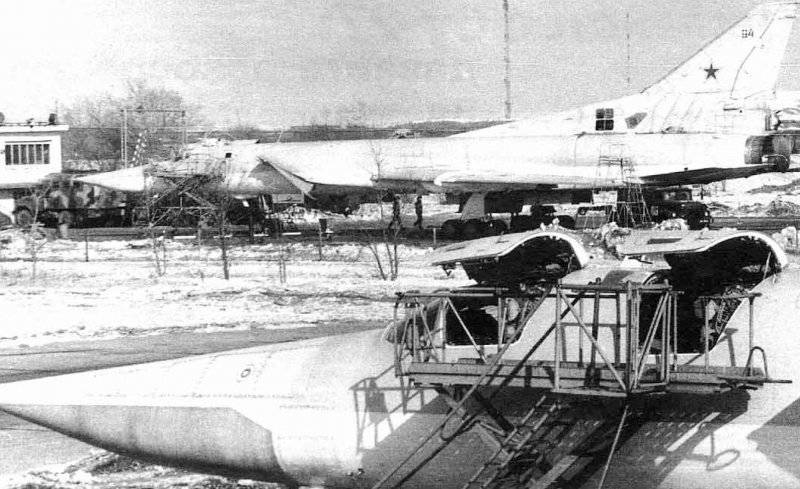
Information